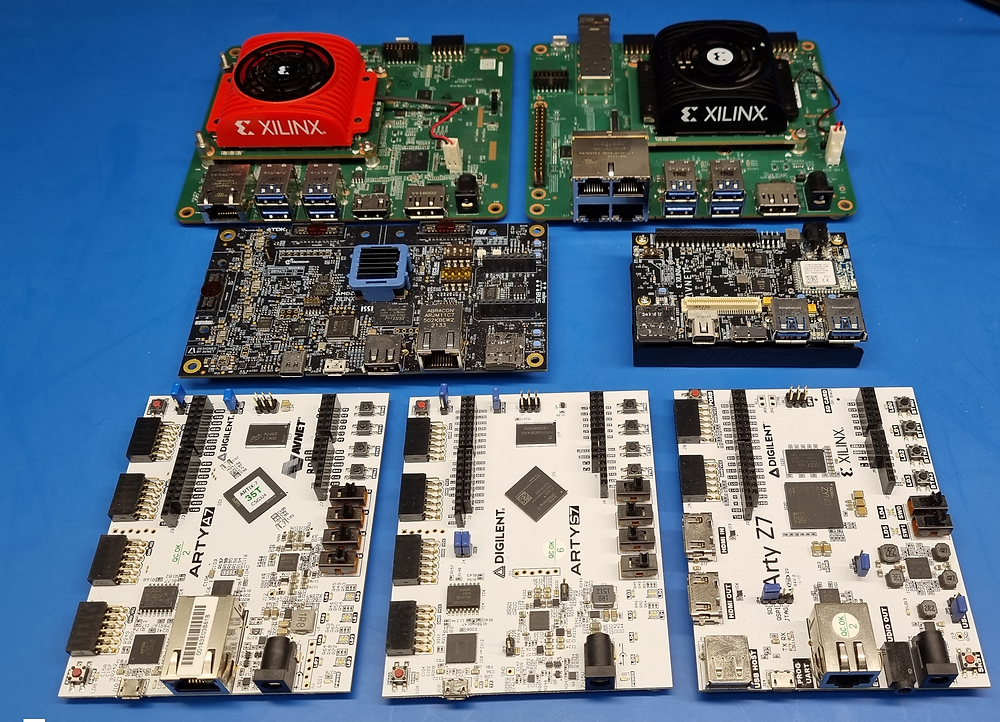Time: 2025-04-23 11:35:08View:
Selecting the right Xilinx FPGA, SoC, or development board requires careful consideration of your project's requirements. Here's a structured approach to help you make the best choice:

What is your application? (Embedded systems, DSP, high-speed networking, etc.)
Performance needs: Clock speeds, processing power, parallel operations
I/O requirements: Number of interfaces (GPIO, Ethernet, USB, PCIe)
Power constraints: Battery-powered or wall-powered?
Budget: Development board vs. production chip costs
Future scalability: Will you need to upgrade later?
| Family | Best For | Key Features | Example Devices |
|---|---|---|---|
| Spartan | Cost-sensitive, low-power designs | Small-to-medium logic density, good for simple control logic | Spartan-7 (XC7S) |
| Artix | Balanced performance & power | Mid-range FPGAs, good for embedded vision & motor control | Artix-7 (XC7A) |
| Kintex | High-performance computing | High-speed serial transceivers, DSP slices | Kintex-7 (XC7K), Kintex UltraScale (XCKU) |
| Virtex | Ultra-high performance | Largest FPGAs, for ASIC prototyping, networking | Virtex-7 (XC7V), Virtex UltraScale (XCVU) |
| Zynq | Embedded processing (ARM + FPGA) | Combines FPGA fabric with Cortex-A9/A53 processors | Zynq-7000 (XC7Z), Zynq UltraScale+ (XQZU) |
| Versal | AI/ML, adaptive computing | AI Engines, DSP acceleration, next-gen SoC | Versal ACAP (XVCV) |
Small projects (LED control, basic logic): Spartan-7 (10K–100K LUTs)
Medium projects (DSP, motor control): Artix-7 (50K–200K LUTs)
Large designs (video processing, networking): Kintex/Virtex (300K+ LUTs)
DSP-heavy (AI, filters, math ops):
Kintex UltraScale (DSP48E2 slices)
Versal (AI Engines for ML acceleration)
High memory bandwidth:
Zynq UltraScale+ (DDR4 support)
Virtex (UltraRAM for large buffers)
| Interface | Recommended Xilinx Family |
|---|---|
| Gigabit Ethernet | Zynq-7000, Kintex-7 |
| PCIe Gen3/4 | Kintex UltraScale, Virtex |
| USB 3.0 | Zynq UltraScale+ |
| HDMI/DisplayPort | Artix-7, Zynq |
| MIPI CSI (Camera) | Zynq UltraScale+ |
Low Power: Spartan-7 (~2W)
Balanced: Artix-7 (~5–10W)
High Performance: Virtex (15W+)
Prototyping: Use Digilent/Basys/Arty boards (cheap, good for testing)
Final Product: Choose bare chips (XC7A, XC7K, XQZU) for cost efficiency
| Use Case | Recommended Board | FPGA | Key Features |
|---|---|---|---|
| Beginner Learning | Basys 3 | Artix-7 XC7A35T | GPIO, VGA, simple I/O |
| Embedded Linux | Zybo Z7 | Zynq-7000 XC7Z020 | Dual ARM Cortex-A9 |
| High-Speed Data | KC705 | Kintex-7 XC7K325T | PCIe, 10G Ethernet |
| AI/ML Acceleration | Kria KV260 | Zynq UltraScale+ | Pre-built AI workflows |
| Ultra-High Performance | VCU118 | Virtex UltraScale XCVU9P | 100G networking |
Define requirements (speed, I/O, power, budget).
Choose FPGA family (Spartan/Artix/Kintex/Virtex/Zynq/Versal).
Pick a dev board (for testing) or select a chip (for production).
Verify with Vivado (simulation before hardware testing).
✅ Start with a dev board (easier debugging).
✅ Check Xilinx’s documentation (User Guides, DS890).
✅ Use Vivado’s IP Catalog (for pre-built PCIe/Ethernet cores).
✅ Consider future upgrades (e.g., Zynq → Versal for AI).